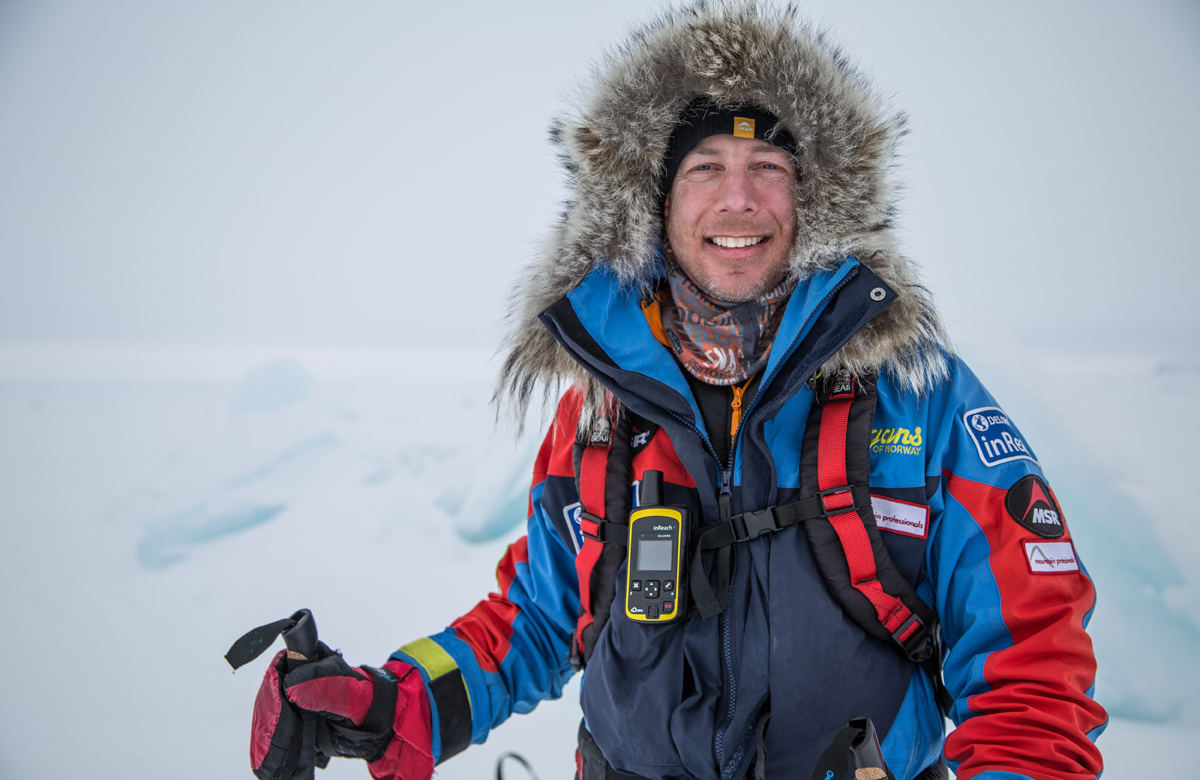Polar Explorer Eric Larsen knows the cold. He’s been to the North Pole, South Pole, and the summit of Mount Everest — all in a single year.

We asked Larsen, who was recently nominated as a 110 Outdoor Ambassador, about the five most important tips and tricks he uses to keep warm out there. Follow these “commandments” to keep happy and warm in any weather.
Winter Warmth Necessities
1. Attitude Is Everything
If you think you’re going to be cold and miserable you are likely going to be cold and miserable. Realize through proper dress, behavior and mindfulness you can be warm no matter the temperature. People say they hate the cold. I think what they mean is they hate being cold. I agree, being cold sucks. It’s painful. I like being warm in very cold environments; you can do it, too.
2. The Polar Strip Tease
Getting too hot while on the move is the most common cold-weather mistake. Your body generates a lot of heat when you’re active. When you get hot, you sweat and moisture replaces the warm layer of air between your body and your base layer. Once you stop, you cool off very quickly. And shortly after that, you’re going to be really cold.
The solution? It’s best to start cold with less layers than you expect you will need and then put more on after your heart is thumping hard from exertion. If you are already heavily dressed, ventilate and take off layers BEFORE you get warm.
I call this the polar strip tease: I’m constantly adjusting my hood, hat, layers, and more: so that I don’t get too hot. I’ve been so warm in -50-degree temperatures that I’ve skied without gloves on. In Antarctica, on my fat-bike expedition, I even biked in a base layer T-shirt. Don’t be afraid to stop and “strip.”
(Not this kind of strip tease)
3. Don’t Get Too Cold
There’s no such thing as cold weather, just not enough layers. If you feel cold, add another layer. When I was racing sled dogs, I routinely wore 7 or 8 layers of clothing!
I divide them up into three basic categories: 1 – Wicking. 2 – Insulation. 3 – Wind protection. I prefer using a synthetic layer next to my skin as it has better wicking properties than wool. Below is a sample of my cold-weather layering scheme.
Cold Weather Wear
-
- Base layer t-shirt (wicking)
- Light base layer long sleeve (wicking)
- Medium weight long sleeve base layer (wicking)
- Fleece jacket (not windproof; insulation)
- Down sweater/jacket (insulation)
- Shell (wind protection)
- Expedition down puffy jacket (insulation)
I start with my basic “action suit,” which are layers 1, 2, 3 (and sometimes another 3), and also 6. Layer 4 is for really cold temps and lower activity level. Layer 5 is for in the tent. 7 is for wearing when I stop.
4. Big Down Jacket
There are not too many cold situations that a big down jacket won’t warm you up. I always carry a big down jacket (in my pack or sled) as my ultimate back up should my body core temperature drop dramatically. Additionally, since I am generally dressed in as FEW layers as possible so I don’t overheat, it doesn’t take much standing/sitting around until I start feeling a chill. Therefore, during short breaks or setting up camp, I immediately put on my down jacket to maintain a more constant temperature.
5. Eat, Drink And Be Merry
It can be hard to eat and drink in cold weather, but your body needs food for energy and to produce heat. Snack and drink regularly throughout the day (I try to eat every hour) to ensure that there is enough gas in your tank to go the distance.
Bonus Tip — In winter, your margin of safety is substantially less than in warmer temperatures. Therefore, be mindful of how you feel, how cold you are, your fingers, and your toes. I constantly assess the conditions, how I feel, wind, etc. Every day and situation is different. If your extremities start feeling painfully cold, it is generally time to stop and make changes.
Double Bonus — Wear a hat, a lightweight balaclava and Buff (neck gaiter) to keep warm. Take them off to quickly dump heat and cool off during times of exertion.
—Eric Larsen is a polar explorer based in Colorado. He was recently nominated by GearJunkie readers as one of the 110 Outdoor Ambassadors.







